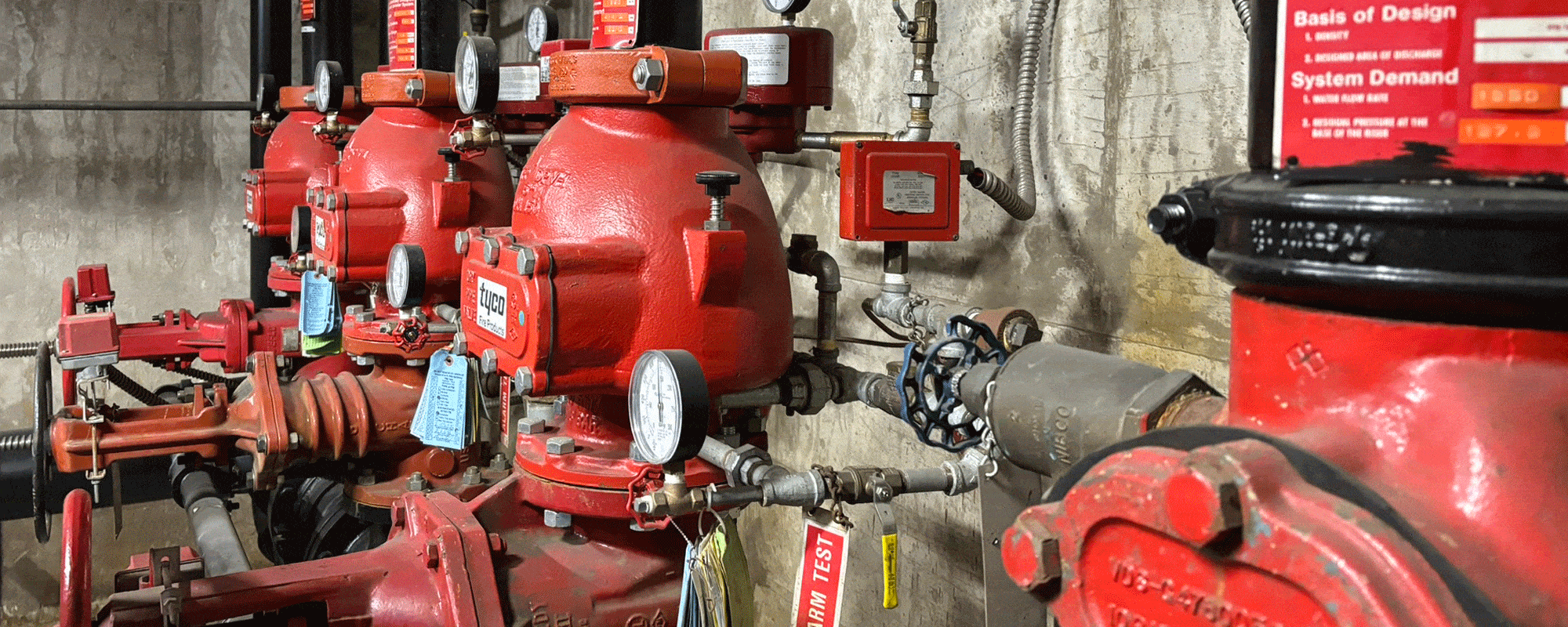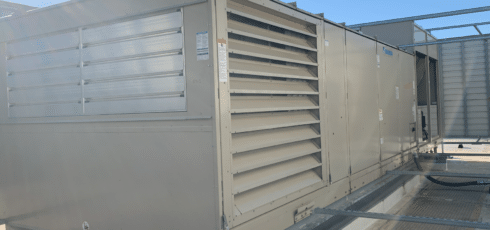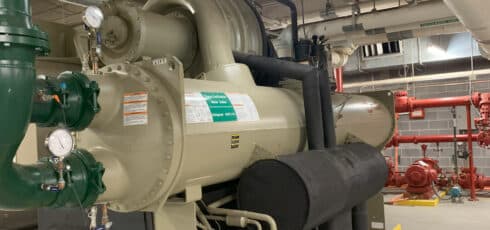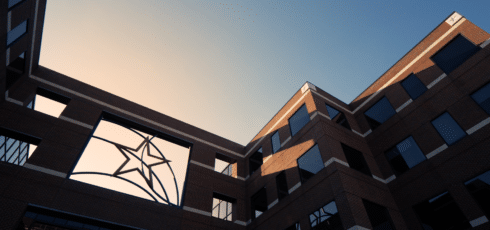Walk into any commercial office building, shopping mall, or restaurant and chances are you rarely think about what would happen in case of a fire. That’s because, behind the scenes, these establishments rely on comprehensive commercial building fire protection systems designed to detect issues early and protect occupants and property.
Read Next: Deferred Maintenance in Commercial Property Management: The Snowball Effect
Most commercial fire systems utilize multiple, integrated technical elements working in unison to maximize fire prevention, detection, and suppression. From sprinklers and alarms to specialized response protocols, this is an inside look at how these critical systems function.
Fire Extinguishers
Portable fire extinguishers provide building occupants with their initial line of self-defense. Strategically mounted units allow swift access within 75 feet of most areas. Different extinguisher types match various fire causes and fuel sources:
- Class A extinguishers dispense water-based agents for standard combustible materials like paper and wood.
- Class B models contain dry chemicals to smother liquid-fueled fires from grease, oil, and gasoline.
- Class C varieties handle fires involving energized electrical equipment via non-conductive agents.
- Class K extinguishers specifically extinguish cooking oil and fat fires common to commercial kitchens.
Their simplicity makes extinguishers fast-acting during a fire’s crucial beginning stages. However, monthly inspections check pressure gauges, equipment conditions, and placement. Units require replacement every 5 to 15 years depending on models and usage.
Read Next: What Are the Different Types of HVAC Systems for Commercial Buildings?
Automatic Sprinkler Systems
Fire sprinkler systems are the workhorses of most buildings’ fire protection. Combining a network of underground and overhead piping with strategically placed sprinkler heads, these systems drench emerging fires with large volumes of water. Thanks to heat-activated triggers, targeted spraying, and backflow preventers, sprinklers can control fires before they spread.

An example of a sprinkler head in a commercial building fire protection system.
Wet Pipe Sprinkler Systems
Wet pipe systems contain pressurized water with flow controlled by a fire alarm valve. The piping is always filled with water, allowing immediate discharge when the sprinkler activates. Wet pipe systems are the most common type used.
Dry Pipe Sprinkler Systems
Dry pipe systems are similar to wet pipe but substitute pressurized air or nitrogen to fill the pipes until water is needed. This allows them to be used in spaces prone to freezing temperatures. Upon heat activation, the air escapes, allowing water to flow.
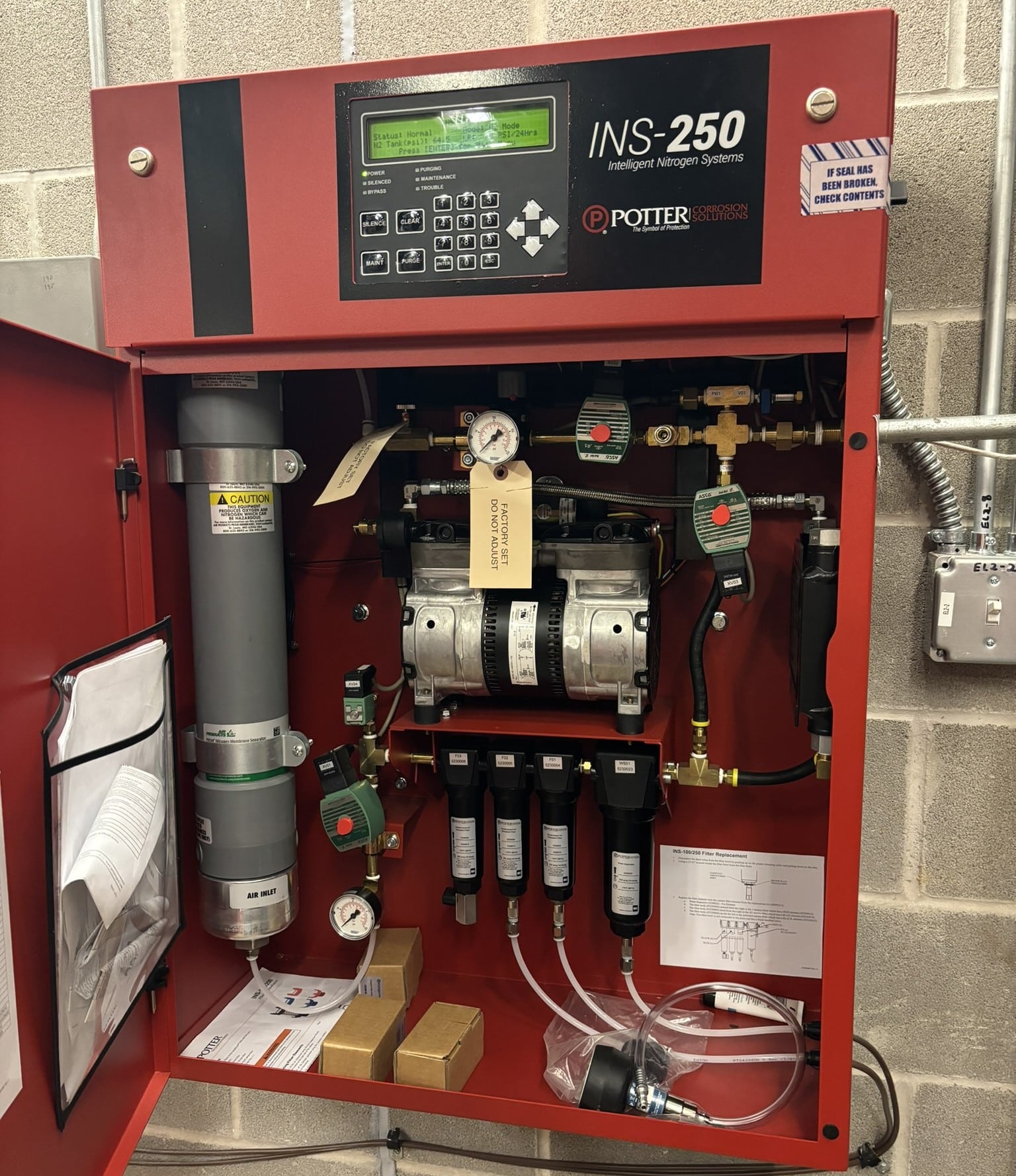
An example of a dry-pipe system using nitrogen.
Pre-Action Sprinkler Systems
Pre-action sprinkler systems add an extra layer of activation before water flows through the piping. This two-step process requires the sprinkler head to fuse due to heat exposure AND an additional detection confirmation – usually from smoke detectors. Both triggers must occur before the system opens valves to release water.
This dual activation approach prevents accidental pipe bursting or leaky head drainage from inadvertently flooding the protected spaces. Such water damage mishaps can severely impact moisture-sensitive environments. Pre-action technology also qualifies for lowered insurance rates in high-value sites. The only tradeoff is a slight delay during confirmed sizable fires compared to traditional automatic sprinklers.
Specialized Systems for Delicate Assets
While water systems suffice for most commercial buildings, facilities housing irreplaceable assets require alternate approaches. Spraying water can badly damage electronics, documents, artifacts, and sensitive gear. Thus, sites like data centers, telecom hubs, museums, and archives often install chemical agents instead.
Common non-liquid systems utilize inert gases like argon, nitrogen, carbon dioxide, and chemical halocarbons to snuff out flames. Storage cylinders connect to a matrix of pipes and nozzles blanketing protected zones. Upon rising temperatures or smoke, the suppression agent discharges rapidly across equipment knocking down fires through oxygen starvation while minimizing collateral harm.
Gaseous systems leave no residue or cleanup compared to messy powders and foams making them ideal for precision electronics and intricate machinery. Equipment easily returns to service post-event after inspecting for component damage versus time-intensive drying efforts.
While inert gases pose negligible environmental impact, some older halocarbon varieties face usage phaseouts due to ozone layer concerns. Costs also run higher over water sprinklers given the exotic nature of specialty systems and agents. But for assets too precious to get drenched, chemical options provide highly targeted protection.
Proper enclosure techniques ensure the elevated suppression concentrations essential for data centers, museums, telecom, and small electrical rooms. Thus derived, specialized systems stop combustion cold in its tracks without destroying priceless surroundings in the process.
Read Next: Cost to Hire a Commercial Property Management Company in Austin, TX (Fees/Rates)
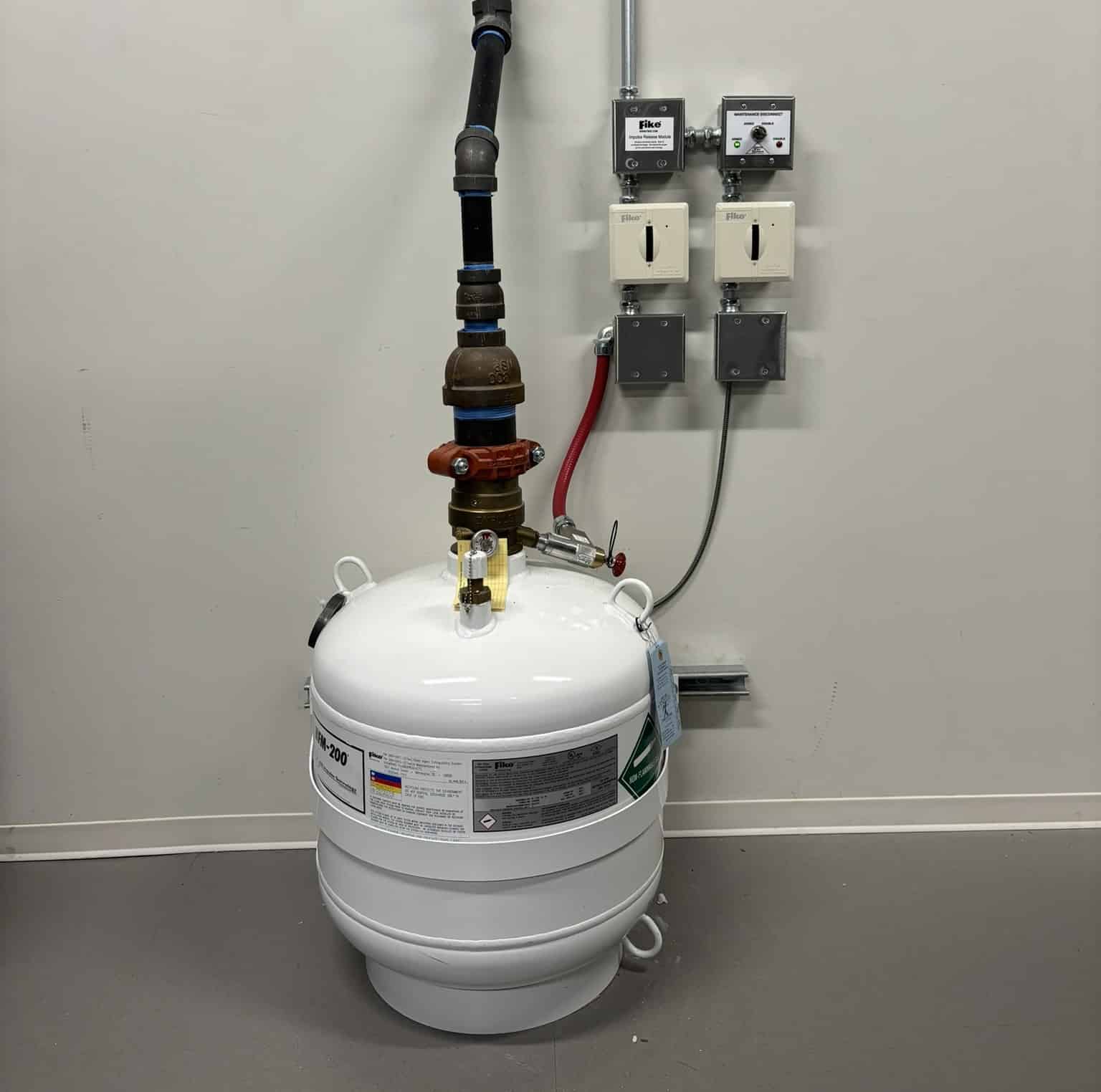
This is a clean agent fire suppressant. Clean agents are fast and effective in suppressing fires, are safe in occupied spaces, and do not leave a residue.
Standpipe Connections
Standpipe connections allow firefighters to rapidly connect their supply hoses to a building’s existing sprinkler system piping. This allows manual hose teams to utilize the higher water flow rates and pressure from the fire protection water supply.
Standpipes are typically upright pipes installed in stairwells, exit passageways, and other fire-rated corridors. Common setups also include smaller pressure-regulated 2.5-inch outlets for occupant use.
Wet standpipe systems remain filled with water at all times. Dry standpipes hold pressurized air that gets discharged upon use, allowing automatic water flow when responders connect hoses or if sprinkler heads are triggered. This helps prevent freezing in unheated buildings and parking garages.
To stay operational, standpipe rooms and cabinets feature tamper alarms and locks. Weekly inspections check control valves to ensure open, accessible positioning. Gauge readings validate system water and air pressures meet codes for adequate firefighter hose streams.
By tapping into existing risers and water supplies, standpipes form reliable backbone conduits giving firefighters immense strategic flexibility. As crucial infrastructure, their availability often dictates a building’s defensive capacity against uncontrolled blazes.
Read Next: 5 Benefits of Using a Property Management Company to Manage Your Office Building
Fire Alarm Systems
Even the best suppression systems can’t contain all fires. In some fire alarm systems – the sensory networks focus on early detection and safe evacuation. While sprinklers target flames, alarms sound when smoke and heat buildups threaten occupants.
Manual Pull Stations
Simple pull stations allow people to manually activate alarms. These compact wall-mounted devices require minimal strength and skill during tense situations.
Smoke Detectors
Smoke detectors placed at ceiling-high points sniff out airborne particulates from smoldering fires. Ionization and photoelectric technologies detect different smoke particle sizes for maximum sensitivity.
Heat Detectors
Unlike smoke types, heat detectors measure ambient thermal rises to pinpoint raging fires. Fixed temperature and rate-of-rise models address various heating speeds and environments. Placement avoids false alarms from normal heat sources.
Notification Appliances
Once activated, the system triggers loud horns supplemented by flashing strobe lights to facilitate building-wide notification – critical for rooms distant from the initial incident. Evacuation messages can also be broadcast through voice modules.
Fire Alarm Control Panel
The central fire alarm control panel monitors all detection zones and notification channels. Advanced addressable systems identify the precise originating alarm location to speed an emergency response. Backup batteries sustain operation during power failures.
Read Next: How to Choose the Right Commercial Property Management Company

An example of an older fire alarm panel.
Comprehensive Testing Ensures Safety
With so much riding on faultless performance, commercial fire systems face extensive oversight throughout their lifespan.
Initial Acceptance Testing
Once installation is complete, the entire newly installed fire system undergoes in-depth testing to ensure proper functioning before the building is occupied. Technicians activate alarms, test backup power supplies, inspect all system components, and analyze water flow rates and spray patterns.
Monthly Fire Pump Inspections
In addition to daily walkthroughs of critical components, full-function tests of the fire water pumps should occur monthly. This evaluation confirms sufficient power, flow rate, and pressure to supply sprinkler and standpipe demand during a major event.
Most buildings rely on both an electric-driven jockey pump maintaining system pressure and a much larger main fire pump for emergency response needs.
Testing the jockey pump:
- Drop the water pressure of the jockey pump and record the start and stop pressures
- Record the discharge pressure, voltage, and amp readings, verifying they stay in normal bands
- Check that check valves don’t allow backflow or leakage
Testing the main fire pump:
- Initiate a full-flow discharge test through the inspector’s test valve
- Record voltage, amperage draws, and outlet pressure during peak flows
- Test the pump for 10 minutes
- Inspect flex couplings and mounts for leakage or instability during churn
By testing these systems, engineers verify reliable automatic handoff between jockey and main pumps while reconfirming pump integrity under the shear loads of a simulated major event. Always better to discover capacity limits through testing rather than in an actual crisis!
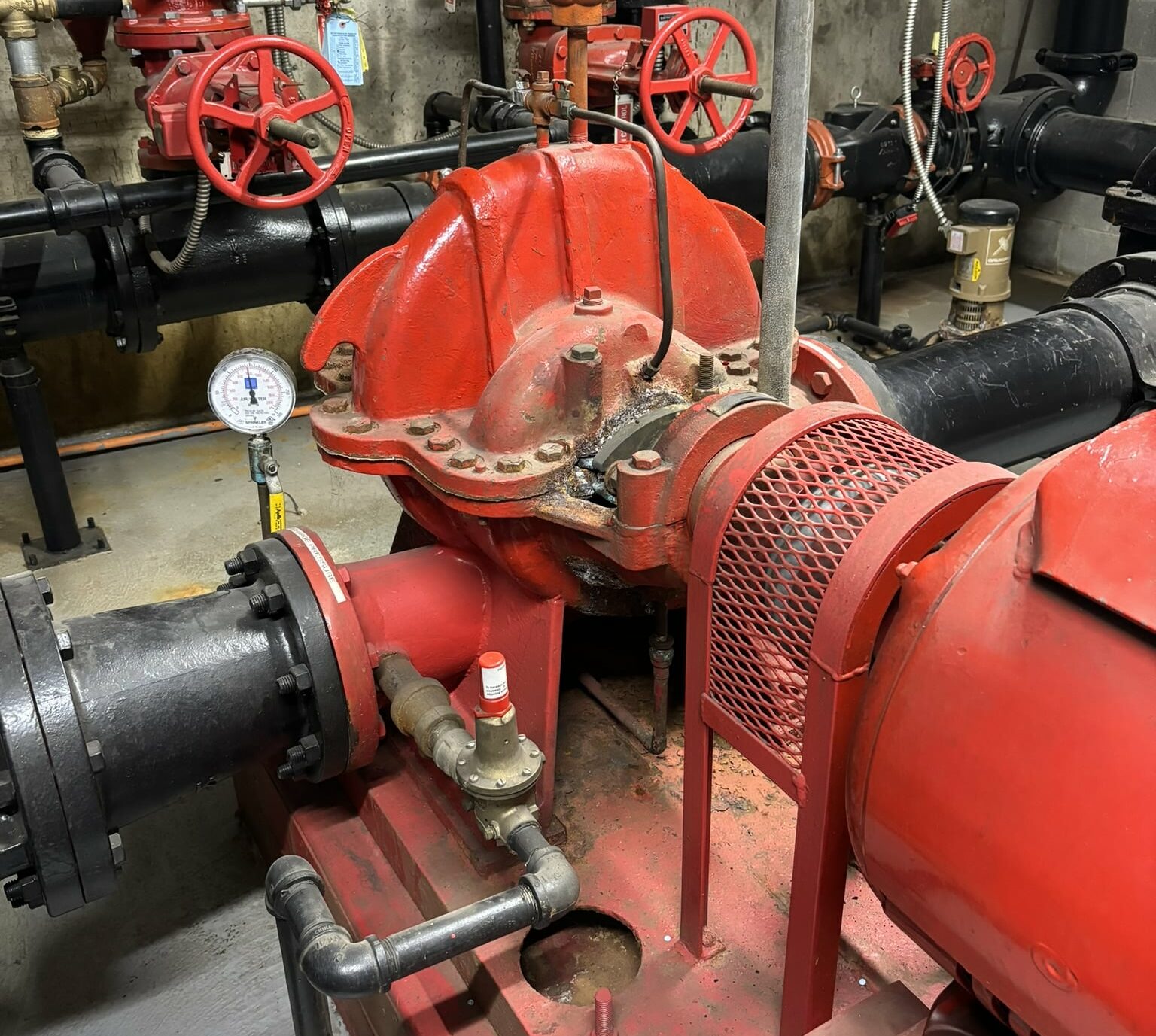
An example of a main fire pump.
Fire Alarm System Testing
Like other fire protection components, fire alarms and detection devices require periodic testing to validate performance. While sprinklers and pumps face intensive flow rate and capacity checks, alarm systems get evaluated for proper signaling, speed, and occupant notification effectiveness.
Functional Testing
Technicians manually trigger alarms from various pull stations and detectors to confirm sirens, strobes, and evacuation messages activate promptly. Tests rotate through all installed equipment over time.
Sensor Verification
Using calibration smoke or specialized heat sources, crews validate the sensitivity thresholds of smoke detectors and heat sensor trip points across operating tolerances.
System Integration Testing
Comprehensive tests confirm all supporting systems interoperate correctly, including battery backups during power failures and panel connectivity to initiating devices and remote monitoring services. These endpoint-to-endpoint checks verify communications reliability.
Sound Pressure Analysis
Using decibel meters, annual audibility testing validates that notification siren and voice volumes meet minimums across all occupied areas – including far-flung rooms distant from alarm sources.
Emergency Response Exercises
Drills staged with cooperating occupants and first responders validate that documentation, training, and procedures match reality during timed full-building evacuations.
Annual Full-System Testing
The NFPA requires a full inspection of the entire fire system at least once every 12 months. The intense audit examines every component, its connections, positioning, mechanical fitness, fluid volumes, and electronic signals. Sprinklers are checked zone by zone.
Quality Service Testing Every Three to Five Years
In addition to annual testing, a further benchmark analysis is required at least once every five years, or after major system modifications. Certified technicians conduct extensive diagnostic tests on components, monitor pitting or wear issues, and calibrate electronics.
Download Now: Full Property Inspection Checklist
The Critical Role of Building Engineers
Of course, keeping these intricate fire protection networks running requires extensive knowledge and skill. That’s where professional building engineers earn their keep.
Managing Installations and Upgrades
Building engineers manage relationships with contractors to ensure new equipment is properly installed and existing systems are upgraded when needed. This requires in-depth understanding of the latest fire codes, inspection standards, and system technologies.
Interpreting Testing Results
By analyzing results from regular fire system tests, engineers can catch small issues before they become big problems. Identifying trends, decrements in performance, and component failures allows for timely repairs.
Coordinating Compliance & Reporting
Building engineers ensure compliance with local fire authorities and standards organizations by maintaining accurate records, documents, and diagrams. This includes keeping testing schedules, reporting repairs, monitoring system impairments, and applying for operational permits.
Training Occupants on Procedures
While advanced systems provide the bulk of fire protection, trained occupants play a key supporting role – especially regarding notification, compartmentalization, and evacuation. Building engineers and property managers lead regular emergency drills and provide instructional materials.
When everyone understands their role in the overall system – from automated technology to human actions – commercial fire safety reaches its highest effectiveness, keeping property damage minor and saving untold lives.
Conclusion
Far from simple collections of pipes, sensors, and switches, commercial fire protection systems represent technological feats of life safety and property conservation.
While we can only provide a glimpse into their inner workings, these 24/7 guards remain constantly on patrol, ready to sound the alarm at the first whiff of smoke and to soak approaching flames.
Thanks to their presence, the unthinkable occurs remarkably less often, keeping building occupants secure during their workdays and errands. So, rest assured – advanced systems and the people that maintain them have your back.
Are you looking for an expert engineering team to help you maintain your building’s HVAC system? Schedule a consultation with one of our property management or engineering experts today.





